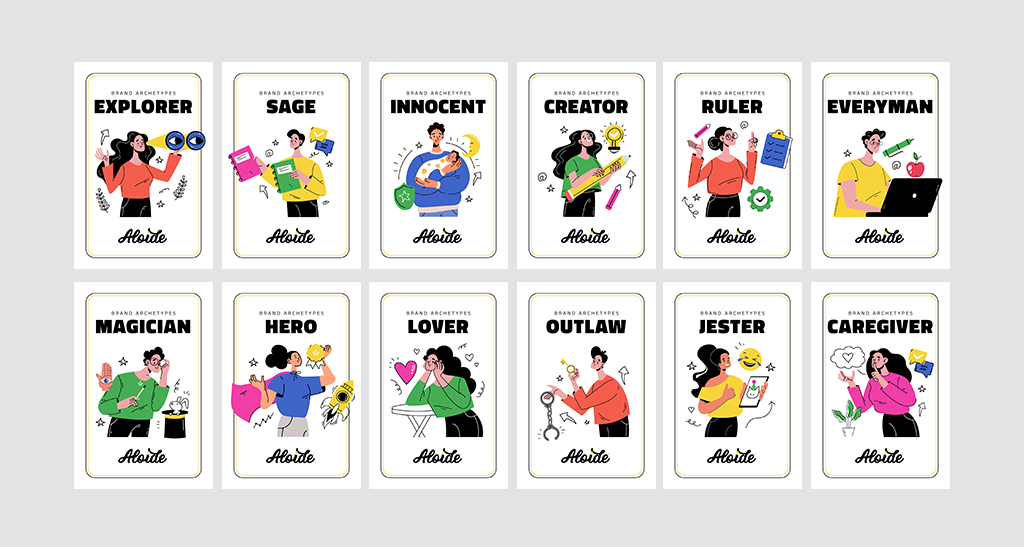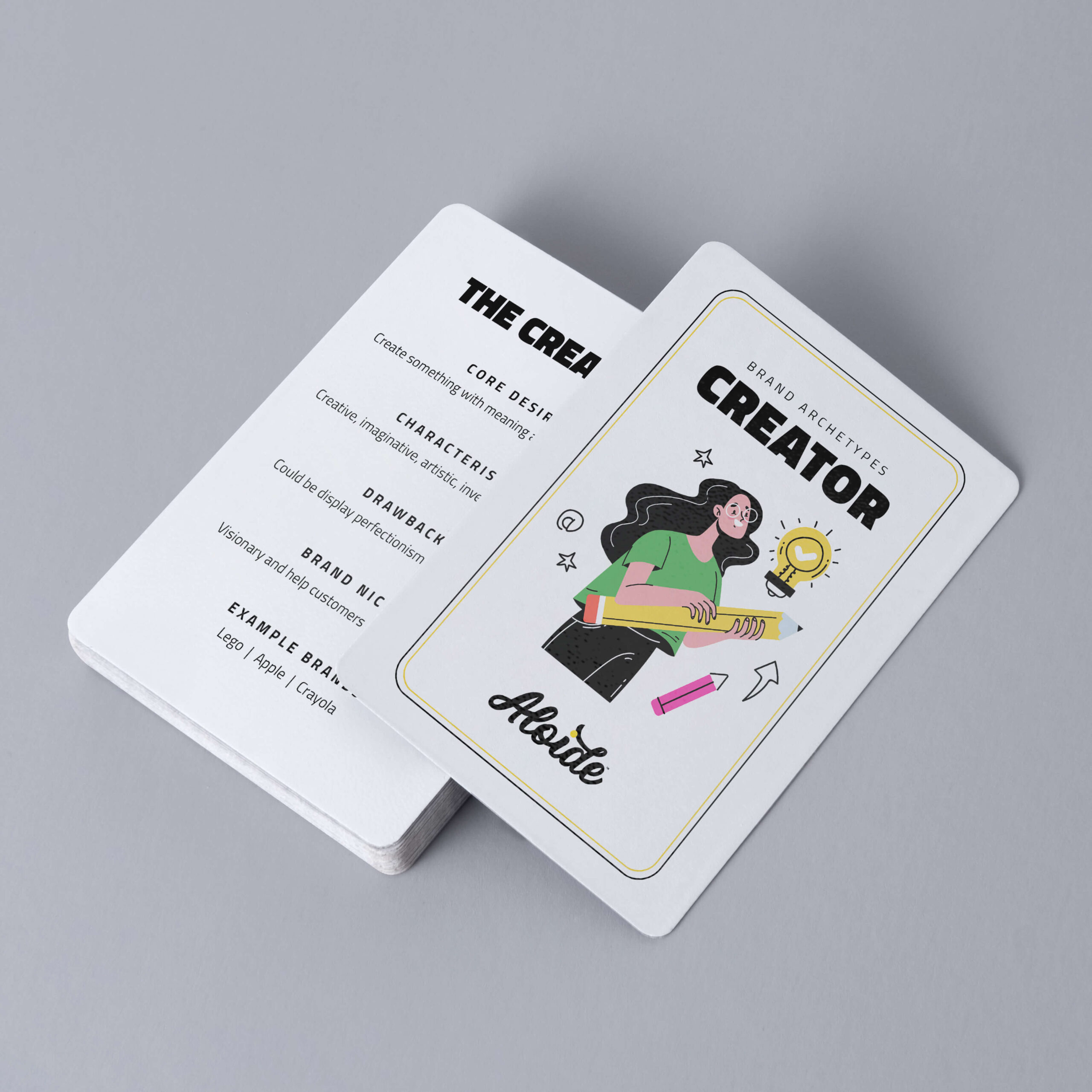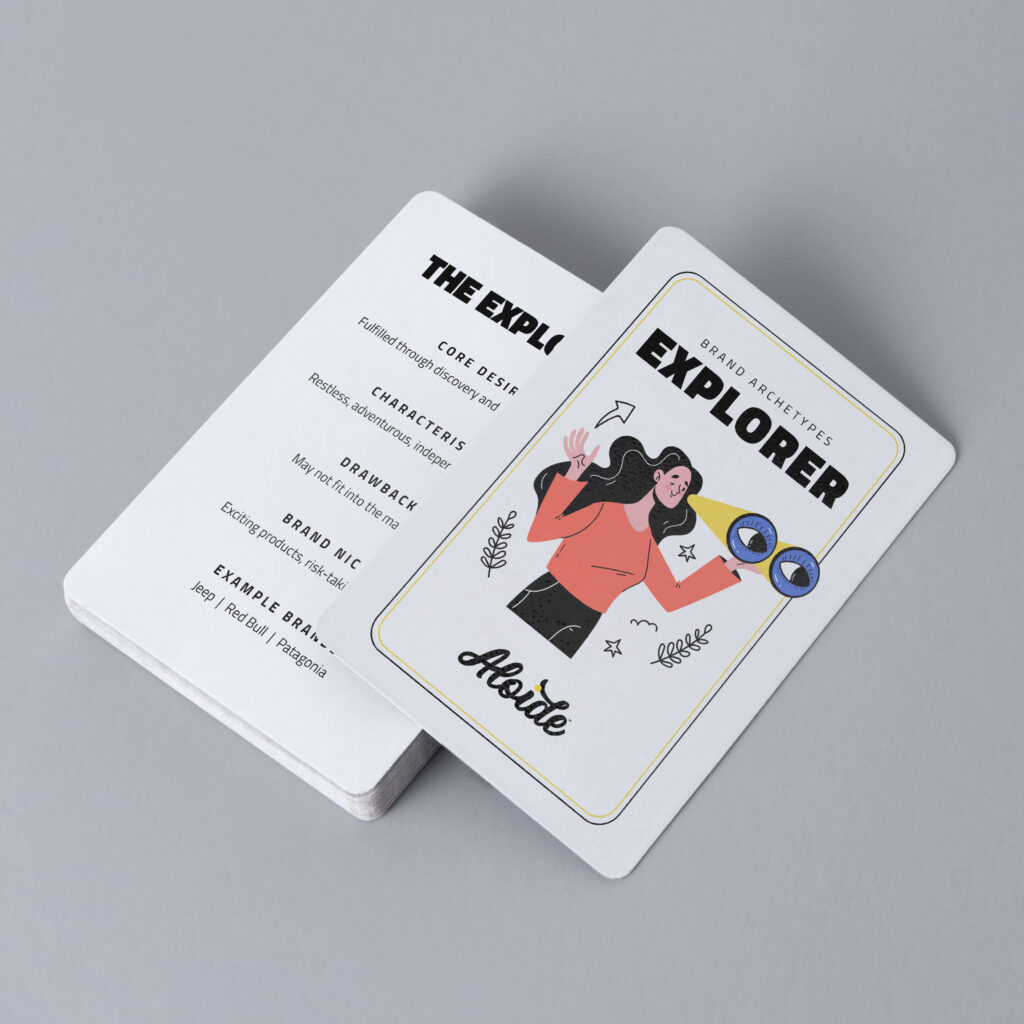There's no 'right' way to do branding.
(We can argue about the 'wrong' ways to do branding later.)
If you worked with ten different branding studios, I’d bet you’d experience ten vastly different approaches to branding. That’s kind of what makes branding so much fun–and difficult. While the process you follow may differ from marketer to marketer, the end game is all essentially the same: to tell your business’s unique story and connect with your customers or audience.
One of the very early steps in our branding process is utilizing brand archetypes. And it happens to be my favorite step of all. But before I get too far ahead of myself, let’s back it up. Back to when I said the goal of branding is to tell your unique story and connect with your customers. There. That part–connecting with your customers.
In branding–and quite honestly, in marketing overall–you have to remember that your customers are people. You’re a human. They’re human. I’m a human (surprise, this was not written by AI). We’re talking about forming connections with humans. That’s why I think every branding expert or marketer should have some familiarity and basic understanding of human psychology. You have to understand what makes people tick.
If you strip humanity down to its bare parts, you’ll certainly find one critically important element: relationships. Relationships are a defining part of being human. Relationships are the bread and butter, the yin to our yang, the peanut butter to our jelly…you get the gist. And it’s no less true when it comes to building a business or creating a brand. A successful business builds strong, long-lasting relationships with its customers, and we have a tool for that.
Enter: Brand archetypes. Brand archetypes are like personality profiles for your brand. Carl Jung created 12 archetypes that define the universal roles of the human subconscious. Whether you were aware of it or not, these archetypes are present in every story read, every movie watched, every fable passed down from generation to generation. These archetypes are the very fabric of human storytelling. Astute readers might key in on that word: storytelling. Remember the first part of our branding mission? To tell your business’s unique story and connect with your customers or audience. Good branding is a lot like storytelling, and good storytelling uses archetypes.
The 12 Brand Archetypes:

Think about it: when your brand embodies a specific archetype, you’re speaking a language that resonates with the very core of human experience. You’re tapping into universal truths and narratives that have stood the test of time, from the ancient myths of Hercules to the great tragedies of Shakespeare and beyond.
Brand archetypes not only help you define your brand’s personality but also help guide every aspect of your marketing strategy—from your messaging to your visuals to your customer interactions. It’s like having your own personal branding compass, pointing you in the direction of authenticity and resonance.

Let's not sugar coat it.
Finding your brand’s archetype isn’t as simple as plucking it out of a hat or throwing a dart at the wall. Mine typically end up on the floor anyway. It takes some soul-searching, some deep introspection, and maybe a touch of existential crisis (hey, it comes with the territory).
Once you’ve uncovered your brand’s archetype, the world is your oyster. You can infuse every aspect of your brand with that irresistible charm and allure that makes customers flock to you like moths to a flame (minus the singed wings, hopefully).
So, whether you’re a startup or a heritage business, don’t underestimate the power of brand archetypes. Embrace the quirks, the idiosyncrasies, the very essence of what makes your brand, your brand. Because in the end, it’s not just about selling products or services—it’s about making connections, telling stories, and leaving a lasting impression on the hearts and minds of your audience.
Download our FREE Brand Archetype Card Deck


